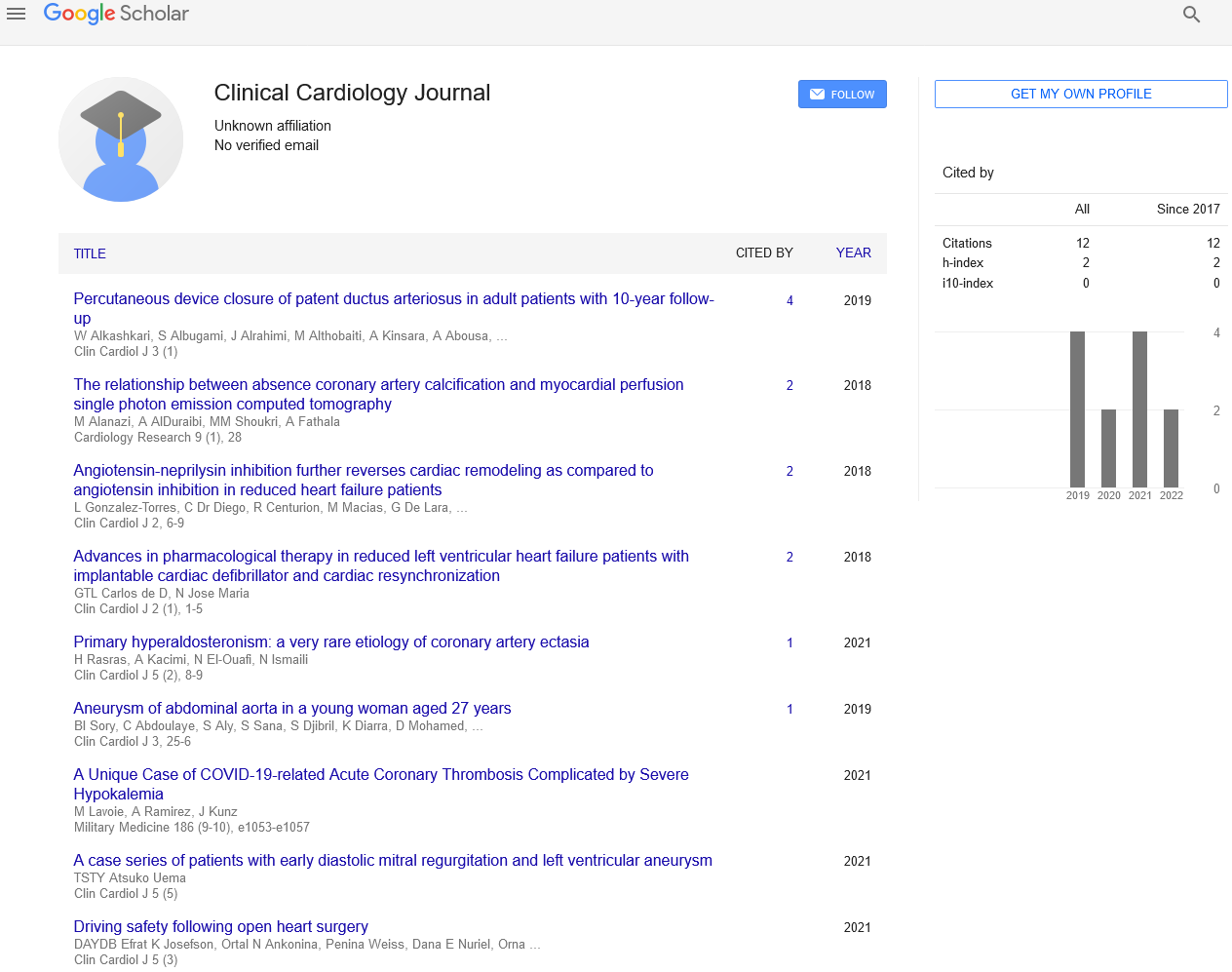Cardiological approach on rheumatic heart disease
Received: 02-Jan-2021 Accepted Date: Jan 20, 2021; Published: 27-Jan-2021
This open-access article is distributed under the terms of the Creative Commons Attribution Non-Commercial License (CC BY-NC) (http://creativecommons.org/licenses/by-nc/4.0/), which permits reuse, distribution and reproduction of the article, provided that the original work is properly cited and the reuse is restricted to noncommercial purposes. For commercial reuse, contact reprints@pulsus.com
Editorial
Rheumatic Heart Disease (RHD) is an infection of destitution, is essentially preventable, and is the most well-known cardiovascular sickness worldwide in those under 25 years. RHD is brought about by Acute rheumatic fever (ARF) which normally brings about combined valvular sores that may introduce clinically following various long periods of subclinical illness. Helpful mediations, thusly, ordinarily center around forestalling resulting ARF scenes (with penicillin prophylaxis). Be that as it may, not all patients with ARF create indications and not all suggestive cases present to a doctor or are effectively analyzed. Consequently, on the off chance that we desire to control ARF and RHD at the populace level, we need a more solid discriminator of subclinical infection. Late investigations have inspected the utility of echocardiographic screening, which is far better than auscultation at identifying RHD.
Rheumatic Heart Disease (RHD) is a constant cardiovascular condition with an irresistible etiology, causing high sickness trouble in low-pay settings. Influenced people are youthful and related grimness is high. Be that as it may, RHD is generally disregarded because of the populaces in question and its lower occurrence comparative with other heart illnesses.
In this survey, we depict how RHD care can be educated by and incorporated with models of care created for need non-transferable sicknesses (coronary illness), and high-trouble transmittable infections (tuberculosis). Inspecting the four-level counteraction model (early stage through tertiary anticipation) proposes early stage and essential avoidance of RHD can use off existing tuberculosis control endeavors, given shared danger factors. Accomplishments in coronary illness control give motivation to likewise striking activities for RHD. Further, we show how the Chronic Care Model (CCM), created for use in non-transmittable sicknesses, offers a significant system to move toward RHD care. Frameworks fortifying through more noteworthy combination of administrations can improve RHD programs.
Fortifying of frameworks through mix/linkages with other well-performing and resourced administrations related to arrangements to embrace the CCM system for the optional and tertiary avoidance of RHD in settings with restricted assets, can possibly fundamentally diminish the weight of RHD universally. More exploration is needed to give proof based proposals to strategy and administration plan.





